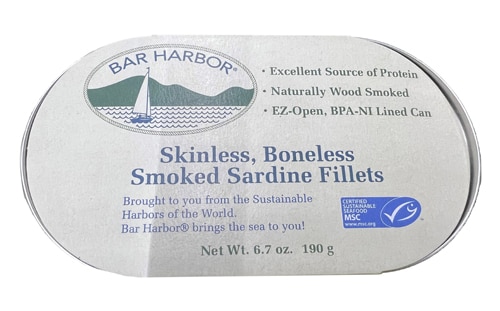February is
American Heart Month, which makes it an important time to focus on doing what you can to
support your cardiovascular health.
Omega-3 fats are one of the most heart-healthy nutrients, yet most people don’t get enough. If you’ve ever wondered how much omega 3’s per day you need, keep reading to learn more.

What are omega-3 fats?
Omega-3 fatty acids are a type of polyunsaturated fat. They are an essential fat that cannot be made by your body and must be obtained by diet and/or supplements.
There are 3 types of omega-3’s, which are:
- Eicosapentaenoic acid (EPA) - this comes from cold-water fatty fish, including salmon, tuna, mackerel, sardines, shellfish, and herring.
- Docosahexaenoic acid (DHA) - this type also comes from fatty fish mentioned above, while also coming from algae and krill oil, and in smaller amounts from seaweed. Both EPA + DHA are also commonly found in fish oil supplements.
- Alpha-linolenic acid (ALA) - this type comes from plant sources, including flax, chia and hemp seeds, walnuts, soybeans and canola oil. ALA can be converted into EPA and DHA in the body, but it is a highly inefficient process. Only up to 21% gets converted to EPA with only up to 9% converted to DHA, with less occurring in men than in women. The conversion rate is also affected by age.
Health benefits of omega-3 fatty acids
Omega-3 fats are best known for their anti-inflammatory properties. Since inflammation is at the root of many diseases and health ailments, this makes omega-3’s beneficial for a wide variety of conditions, including:
- Heart disease and overall heart health, including lowering blood pressure and triglyceride levels, and reducing the risk for heart attack and stroke.†
- Inflammatory diseases: Omega-3 fats have been shown by research to help manage and/or reduce risk of many inflammatory diseases, including arthritis, diabetes, obesity, allergies and more.†
- Supports cognitive function. Some research shows that consuming more omega-3s can help prevent and treat cognitive decline, including conditions like Alzheimer’s disease and dementia.†
- May protect against and help treat some types of cancers, like breast and colon cancer. However, research is still mixed and more studies are needed.†
- Supports autoimmune disorders, such as multiple sclerosis and lupus.†
How much omega 3 per day do we need?
Surprisingly, there is no official dosage recommendation for total omega-3 fats yet, though health experts are eager for there to be one soon. ALA is the only type of omega-3 that has an established recommended amount. The current
recommended intake for ALA is 1.6 grams/day for men, 1.4 grams/day for women, and between 1.3-1.4 grams/day for pregnant or breastfeeding females.
Though not an official guideline for EPA and DHA, the American Heart Association along with the
Dietary Guidelines for Americans recommends eating fish at least two times per week (about 8 oz. total), which would provide an estimated 250-500 mg of EPA + DHA. Unfortunately,
research has shown that over 90% of Americans do not consume this amount.
People who may especially benefit from omega-3’s include:
- People with heart conditions
- Those with cancer
- Those with inflammatory diseases like arthritis, autoimmune conditions and inflammatory bowel diseases like Chrons and Ulcerative Colitis.
- Infants, due to rapid brain development
- The elderly
In addition, consuming too much omega-6 fats, which are another type of polyunsaturated fat, also increases your need for omega-3s. These fats are found in vegetable oils that are often used in frying, and they can promote inflammation when consumed in excess. The
ideal ratio of omega 6 to 3 is believed to be about 2:1 for best health, yet most people living in North America consume up to 20:1, which is potentially harmful. It’s important to be eating enough omega-3 fats to counteract the possible negative effects of too much omega-6 fats.
While getting too much is not an issue for most people, the
FDA recommends that daily intake not exceed 3 g/day of EPA and DHA combined from food, and no more than 2 g/day from supplements.
†
How can you get more omega-3s into your diet?
Getting more of this essential and important nutrient doesn’t have to be difficult.
Here are some simple ways to increase your intake:
- Add hemp or chia seeds to a bowl of yogurt and fruit, or mix into oatmeal
- Add ground flaxseed to a smoothie, or sneak it into baked goods.
- Add simple salmon recipes to your weeknight dinner rotation
- Eat fish in general more often, such as enjoying tuna sandwiches or fish tacos.
- Enjoy chia seed pudding, a delicious and highly nutritious dessert rich in ALA omega-3’s
- Snack on walnuts, pair them with cheese and crackers, or sprinkle them on a salad or oatmeal.
- Supplement daily with things like fish oil, cod liver oil, algae or krill oil.†
In summary
Omega-3 fats are truly a nutrient you don’t want to (and shouldn’t) miss out on. They have the potential to prevent and help treat numerous conditions. In addition, the foods that contain them are delicious and able to be incorporated into a wide variety of recipes and meal or snack ideas. Doing what you can to consume more of them will benefit not only your heart, but your whole body.
†These statements have not been approved by the Food and Drug Administration. These products are not intended to diagnose, treat, cure or prevent disease.



















